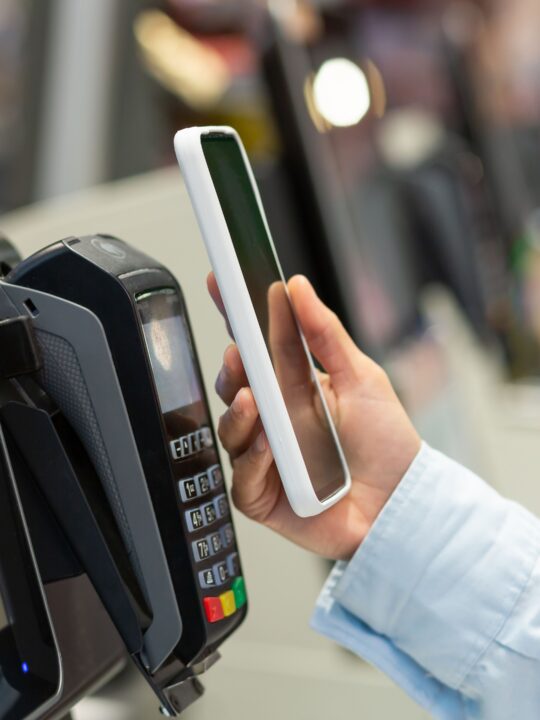The Truth of Loyalty Schemes

In today’s climate, everyone’s looking for deals. Brands are looking for easy wins, and one popular method of drawing customers in and keeping them there is the use of loyalty schemes. ‘Buy from only us, and you’ll make some savings’.
But there’s understandable cynicism about loyalty schemes – I myself am wary of clients who talk about brand ‘lovers’ and ‘loyalists’. These shoppers are often loyal to lots of different brands – they just love to love. It’s the same with loyalty schemes; some shoppers express exhaustion at needing to have a loyalty card or app just to access the everyday prices they’re really after.
Our research shows that it’s actually the balance between the short-term ‘activation’ that gets you to sign up, and the longer-term rewards that get closest to impacting behaviour. This is particularly important for younger shoppers who are much less engaged with loyalty schemes in general.
If you ask shoppers how they feel when it comes to loyalty schemes, most are likely to say they look to use deals and schemes to their advantage during these especially trying times. But how much does this really tell us? How are shoppers really interacting with loyalty schemes, despite what they say? Are they even aware of their own habits and biases?
We took a deep dive into the truth of loyalty schemes, and how brands can really connect with their customers. So, what did we find?
Lack of engagement amongst young people
From our research, one of the clearest emerging themes was that of age. Overall, we found that young people were engaging with these schemes much less than older generations. The majority of UK adults are part of a loyalty scheme, with 3 in 4 having a supermarket loyalty membership. Older shoppers are more likely to have grocery loyalty cards, with women & 55+ year olds having the widest repertoire of schemes. The younger generation have the least.
When it comes to specific schemes, it was Tesco Clubcard that came out as the most recognised and favoured loyalty scheme, except with 55+ year olds, who are more likely to favour Nectar and M&S Sparks. There are a few reasons for these differences, and it often comes down to barriers. For example, some loyalty schemes simply don’t provide an immediate reward, and 34–54-year-olds are most frustrated by this lack of immediacy. Younger people are more used to speed, efficiency, and smooth user experiences. So along with a lack of instant gratification, it was also found that using an app proves to be a bigger barrier than a physical card (18% vs 7%), with using an app becoming an especially large barrier for those over 55 years old.
The biggest barrier to uptake by far, however, was the payoff timings. Overall, it was found that many loyalty schemes take too long to build up benefits, or have benefits that don’t really end up getting used.
How are brands responding to these challenges?
How can brands overcome these barriers, and prevent different demographics becoming tired of their loyalty schemes and offerings?
Boots has managed to do something that transcends the divide of age, to create some Christmas anchoring. The card is already associated with the Christmas period, so rather than just offering in-store savings on the day, the card can be used to accrue points for Christmas, offering both long and short term rewards for users. Being anchored by Christmas gifting means that you have a specific, meaningful and relevant goal in mind. Whether or not this was the intent, this is how it is being used.
Boots is also seen, by many, to simply offer the most points per pound alongside personalised offers. This removes the common complication of not knowing what points mean, and how much value they have. So, what did people have to say?
“It was 4 points per £1 but has dropped to 3 which is still very good compared to other retailers. Also has personalised offers each month that give you even more points.”
“I like how Boots points equate to actual money off, and I feel like I accumulate points quite quickly, particularly because I use their scan to recycle scheme.”
“It’s the most generous in terms of points and I love saving these up to get myself a nice treat which is usually perfume as it can be expensive to buy.”
It’s clear that accumulation of points in this way is driving higher engagement. This can, in part, be explained by the goal gradient effect, which can be summed up simply with the following example.
A 10-space coffee card pre-stamped twice will be completed faster than an 8 with no pre-stamps. Our efforts increase as we move closer to the goal – it’s the reason people are more likely to donate to a charity when they are seen to be closer to achieving their goal. It’s the same way the Lidl app works to incentivize certain behaviours that unlock a new offer.
Striking the right balance
The key challenge for brands seems to be striking a balance between activation, and longer term reward. As part of our survey, a MaxDiff trade off exercise pitched a long list of potential benefits against one another. It clearly showed that money off and members-only deals or prices are the main drivers to shop more often. This is twice as likely to drive behaviour as personalised offers or sign up deals.
This is consistent between retail and grocery on the whole. For retail, “free delivery all year round” is of greater importance, showing a clear gravitation towards immediate, consistent reward, rather than delayed, staggered pay offs.
When engaging with younger shoppers, our data shows that focusing on partnerships with other services like Spotify is twice as likely to drive behaviour with 18-34 year olds. This is the ideal way to provide that longer term benefit, because it delivers constant, tangible value.
Tesco Clubcard provides both an immediate gain and longer term pay off. Fundamentally though, it reinforces existing behavioural patterns amongst regular shoppers. Here’s what some respondents had to say.
“I can save all my points and use the whole lot at Christmas, seriously reducing my Christmas food shop. Tesco is the best for everything, so it’s a win win for me on this.”
“It reduces the price of items in store, but also builds up points you can spend elsewhere. So it has two advantages for using it.”
“It is the local supermarket where I do most of my grocery shopping and gives a good discount with Clubcard points.”
CONCLUSION
The key question is, how do you retain loyalty? Getting shoppers on board in the first place isn’t the challenge – it’s creating the long-term commitment. Loyalty schemes should provide a clear incentive to sign up in the form of member-only prices. It must be matched with a longer term goal that creates the ‘stickiness’ needed to ensure shoppers keep coming back to you vs. competitors. Too many loyalty schemes are not properly attuned to the behaviours and needs of customers, meaning that they fail to take off.
Only by closing the say-do gap and building a true behavioural map of customer interactions with loyalty schemes will brands succeed. For more information, get in touch today.

 Back to articles
Back to articles

